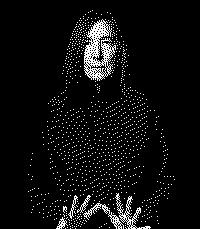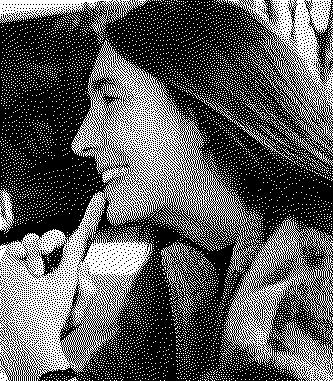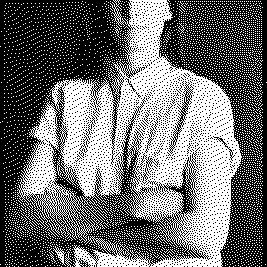Artists/Jenny Holzer
Fast Facts
Innovation in Text-Based Art
Jenny Holzer is renowned for her pioneering work in text-based art, utilizing words and ideas as her primary medium. Through her use of LED signs, projections, plaques, and other materials to display her texts, Holzer transforms public spaces and galleries into arenas of reflection and debate, emphasizing the power of language in public discourse.
Engagement with Public Spaces
A hallmark of Holzer's work is her innovative use of public spaces to engage directly with a broad audience. By situating her art in locations ranging from Times Square to museum facades and natural landscapes, she bypasses traditional art venues to question and disrupt the everyday flow of information in society.
Exploration of Political and Social Themes
Holzer's texts often confront challenging political and social issues, including violence, oppression, sexuality, feminism, and power dynamics. Her work encourages viewers to consider their own beliefs and the impact of societal norms on individual and collective behavior.
Use of Technology and Light
Holzer's art is notable for its sophisticated use of technology, particularly LED lights and projections, to create visually striking installations. This fusion of technology with language allows her to reach audiences on a grand scale, enveloping viewers in immersive environments of moving text.
Influence and Recognition in Contemporary Art
Jenny Holzer's contributions to contemporary art have been widely recognized and celebrated. Her innovative approach to art-making has not only expanded the boundaries of conceptual and installation art but also has had a significant impact on how art can be integrated into public life and political discourse. Her work continues to inspire artists and activists around the world, attesting to her lasting influence on the art world and beyond.
Biography



Jenny Holzer is an American conceptual artist known for her distinctive approach to installation art, particularly her use of text to engage with public spaces and explore complex social and political issues.
Born on July 29, 1950, in Gallipolis, Ohio, Holzer's work has been influential in the art world for its powerful exploration of themes such as violence, oppression, sexuality, feminism, power, war, and death, often challenging the viewer to reconsider their perspectives on these issues (Encyclopedia Britannica) (Wikipedia).
Holzer's artistic journey began with a deep interest in art from a young age, which she temporarily set aside during her adolescence before rediscovering her passion while studying at Ohio University and the Rhode Island School of Design. After moving to New York City in 1976, she was accepted into the Whitney Museum of American Art’s Independent Study Program, which proved pivotal in the development of her signature style. It was here that she conceived her first public art project, "Truisms" (1977-79), consisting of short, impactful statements that she distributed anonymously throughout Manhattan (The Art Story).
In 1982, Holzer's artistic expression took a significant turn when she began incorporating modern computer systems and LED technology into her installations, starting with a large electronic sign in New York's Times Square. This marked the beginning of her use of LEDs to broadcast her messages, allowing her to reach a broader audience. Her installations often feature provocative and thought-provoking phrases that reflect on life, society, and various contemporary issues (Wikipedia).
Holzer's work extends beyond LED installations; she has also worked with stone, creating environments that juxtapose the ancient material with modern technology, and has utilized light projections to cast large-scale texts onto buildings and other structures. These projects often highlight the tension between secrecy and transparency, especially in relation to government documents and policies (Wikipedia) (The Art Story).
Holzer's contributions to art and culture have been recognized globally, with exhibitions at prestigious venues like the Venice Biennale, the Guggenheim Museums in both New York and Bilbao, the Whitney Museum of American Art, and the Louvre Abu Dhabi. Her work challenges audiences to engage critically with the text and context of her installations, making a profound statement on the power of words in the public domain (Jenny Holzer's Projects).
Jenny Holzer's artistry lies in her unique ability to fuse the aesthetic with the political, creating works that not only captivate visually but also stimulate intellectual and emotional responses. Through her exploration of language and public space, Holzer invites viewers to reflect on the complexities of human experience, making her one of the most influential conceptual artists of her time.
Importance
Jenny Holzer's significance in the realm of contemporary art is multifaceted, stemming from her innovative use of language as a central medium, her engagement with public spaces to communicate complex messages, and her profound impact on the discourse surrounding art and society:
Revolutionizing Text as Art Medium
Holzer has been instrumental in elevating text to the forefront of contemporary art. By employing language as her primary medium, she transcends traditional art forms, making complex and often political statements accessible to a broad audience. Her work blurs the lines between art, activism, and public discourse, challenging viewers to engage with critical social issues directly (Encyclopedia Britannica) (Jenny Holzer's Projects).
Pioneering Art in Public Spaces
A pioneer in using the urban environment as a canvas, Holzer's installations in public spaces have redefined the boundaries and possibilities of site-specific art. Her work, displayed on LED signs, plaques, and projections on buildings and landscapes, brings art into the daily lives of people, democratizing access to art and encouraging public engagement and reflection on societal issues (Wikipedia) (The Art Story).
Addressing Critical Contemporary Issues
Holzer's art tackles pressing global issues such as violence, oppression, sexuality, feminism, power, war, and death. Through her succinct and impactful phrases, she invites viewers to reconsider their views on these topics, fostering a space for dialogue and reflection. Her approach to art as a means of social commentary has influenced how artists engage with contemporary issues through their work (Encyclopedia Britannica) (Wikipedia).
Innovative Use of Technology and Materials
Through her inventive use of LED technology, projections, and other mediums, Holzer has expanded the technological and material vocabulary of contemporary art. Her integration of modern technology with traditional materials, such as stone and metal, has pushed the boundaries of how art can be experienced and interacted with, both physically and conceptually (Wikipedia) (The Art Story).
Influencing Future Generations of Artists
Holzer's unique approach to art, combining technology, language, and public engagement, has paved the way for future generations of artists. She has demonstrated the power of art to provoke thought, elicit emotional responses, and instigate social change, inspiring artists worldwide to explore new mediums and methods of communication in their work (Encyclopedia Britannica) (Jenny Holzer's Projects).
Expanding the Scope of Conceptual Art
Holzer has played a crucial role in the evolution of conceptual art, particularly in how ideas can be communicated through various forms and media. Her work exemplifies how conceptual art can intersect with other disciplines, such as political science, philosophy, and literature, broadening the scope of what can be considered art and how it can impact society (Encyclopedia Britannica) (The Art Story).
Technique
Jenny Holzer's technique in her art practice is distinguished by several innovative approaches that blend technology, public engagement, and the written word, creating a unique and impactful artistic language:
Use of LED Technology
One of Holzer's signature techniques involves the use of LED signs to display her texts. This method allows her messages to reach a wide audience in public spaces, combining the immediacy of digital media with the depth of literary expression. Her LED installations vary from simple scrolling messages to complex, multi-part narratives that envelop architectural spaces, creating immersive environments that engage viewers both visually and intellectually (Encyclopedia Britannica) (Wikipedia).
Projection of Texts on Buildings and Landscapes
Holzer has pioneered the technique of projecting large-scale texts onto buildings and natural landscapes. Using powerful projectors, she casts phrases and sentences onto surfaces, transforming them into canvases for her messages. This approach not only magnifies the impact of her words but also integrates her art into the environment, making the medium an integral part of the message (Wikipedia) (The Art Story).
Integration of Text with Traditional Materials
Holzer combines text with traditional materials such as marble, stone, and metal to create sculptures and installations. By engraving or affixing text to these materials, she juxtaposes the permanence and historical connotations of the materials with the contemporary relevance of her messages. This technique bridges the gap between past and present, inviting reflection on timeless human conditions through modern perspectives (Wikipedia) (The Art Story).
Interactive and Participatory Elements
Many of Holzer's works incorporate interactive or participatory elements, inviting viewers to engage directly with the art. Whether through the physical interaction with her installations or through contemplation provoked by her texts, Holzer's technique fosters a dynamic relationship between the artwork and the audience, making the viewing experience personal and reflective (Encyclopedia Britannica) (The Art Story).
Adaptation of Texts from Various Sources
While Holzer initially wrote most of the texts for her works, she has increasingly incorporated texts from other writers and sources, including government documents, poetry, and literature. This technique of curating and repurposing texts allows her to explore a wide range of voices and perspectives, adding depth and diversity to her exploration of themes such as power, violence, and identity (Wikipedia).
Exploration of Text in Digital and Physical Forms
Holzer's technique extends to the exploration of text in both digital and physical forms, from virtual displays and online projects to tangible items like T-shirts and stickers. This multifaceted approach to dissemination extends the reach of her work, allowing her messages to permeate various aspects of public and private life, challenging the boundaries between art, activism, and everyday communication (Encyclopedia Britannica) (Jenny Holzer's Projects).














